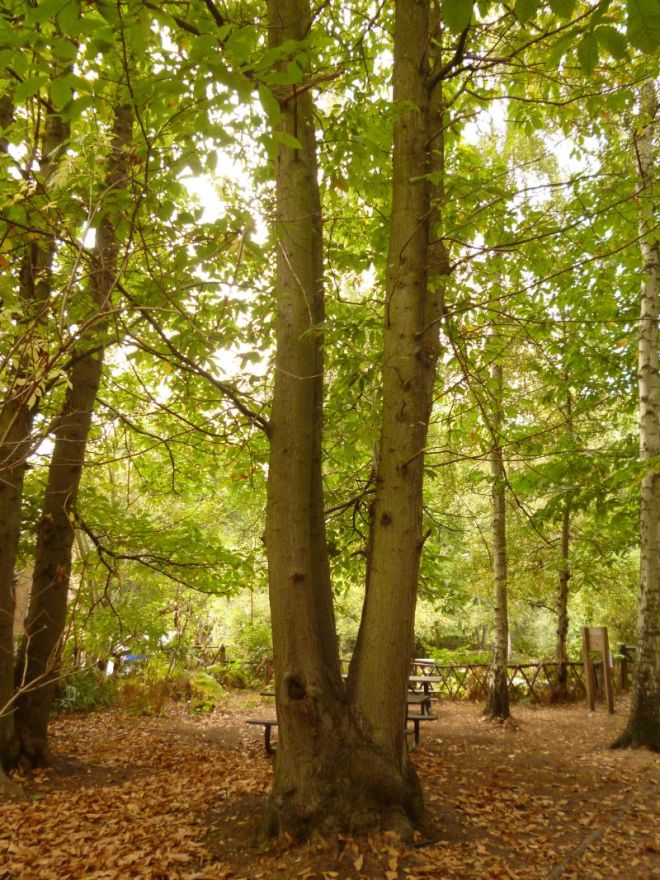Having been informed earlier by a friend that they have an article coming out soon in the journal Field Mycology and having then read the article, I considered it important to build on the information and photos shared in the manner I am most familiar: ramblings. I do not want to spoil the article so please do source the article yourself, though as a form of executive summary, this fungus, Confistulina hepatica, is the anamorphic (asexual) stage of the fungus Fistulina hepatica (beefsteak), which is common on oak and sweet chestnut. I have found it once on beech, though it generally sticks to the first two hosts. This anamorphic stage produces asexual spore, which adorn the fruiting body’s outer portion in abundance. The reason for its emergence is not known, though it might be weather-related. More information is absolutely required from across its host range – not just England!
Disclaimer: The older finds, because I didn’t know what I was looking at, are quite poor photographs. A huge shame, but alas!
Disclaimer 2: I suspect many of these are the anamorphic stage Confistulina hepatica, though none were confirmed so please do not assume they all are. This blog post is simply to begin building a knowledge base that builds of the limited resource pool of present.
The first oak that I’ll share is perhaps one of the more interesting of the bunch because, two years in a row (2015 and 2016), the outwardly anamorphic fruiting body appeared in the same location; albeit, in 2015, the fruiting body was larger. Nonetheless, it infers that, in a crude manner, the same mycelial colony has done the same thing two years in succession. Unfortunately, during 2015, I didn’t get a shot of the whole tree so the location of the arrow points to the 2016 occurrence. However, from the positioning of the ivy, we can see the location is the same.
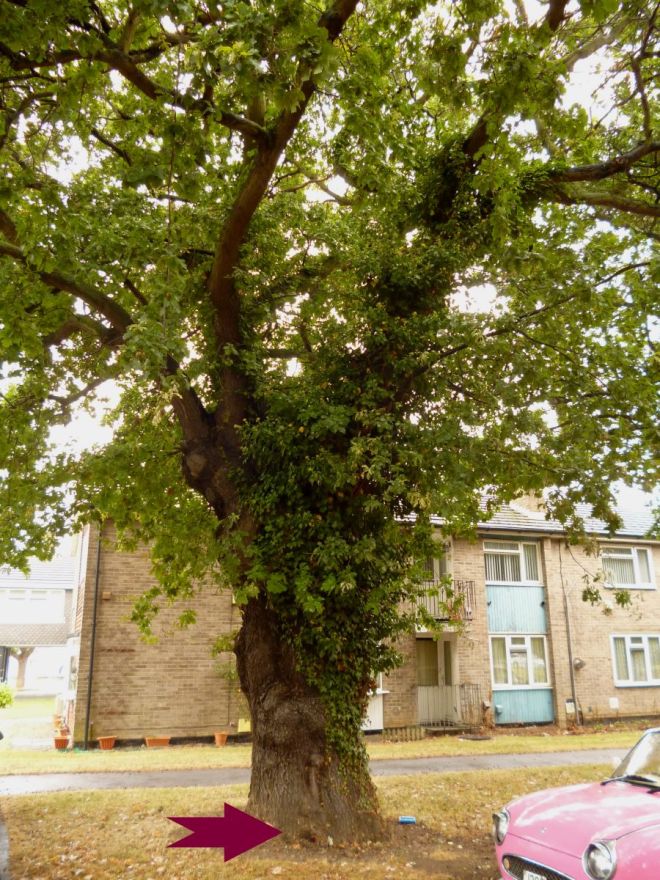
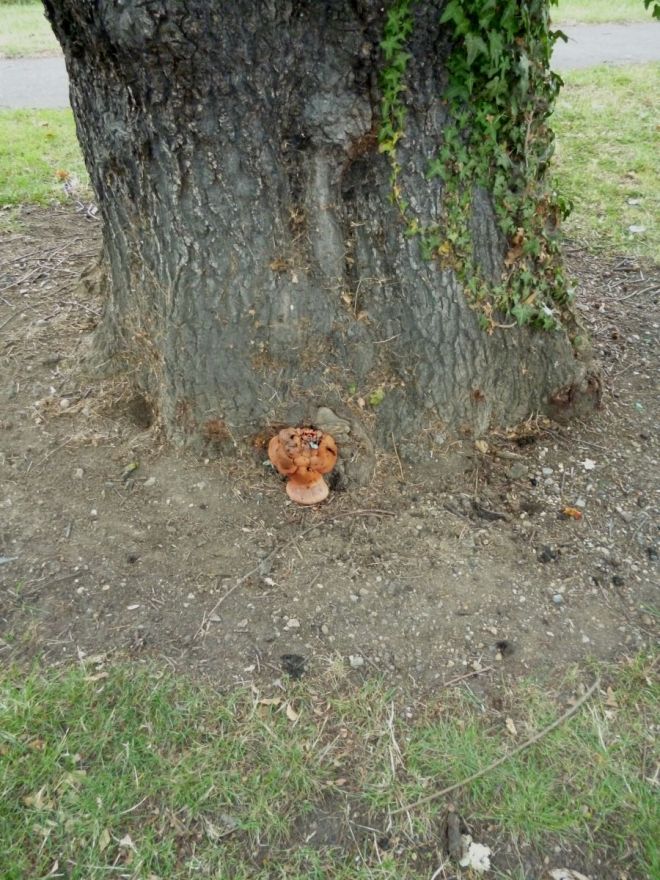
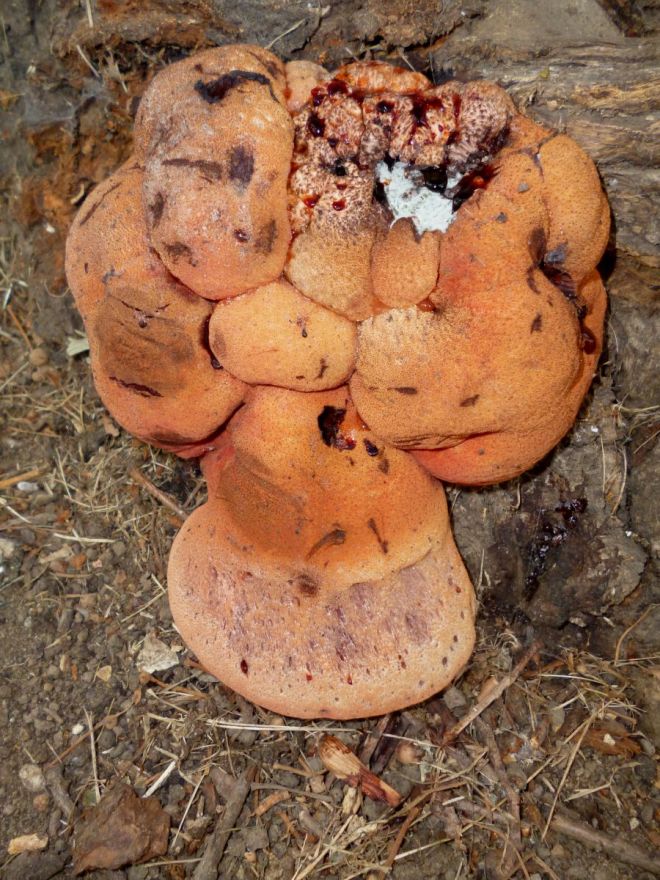
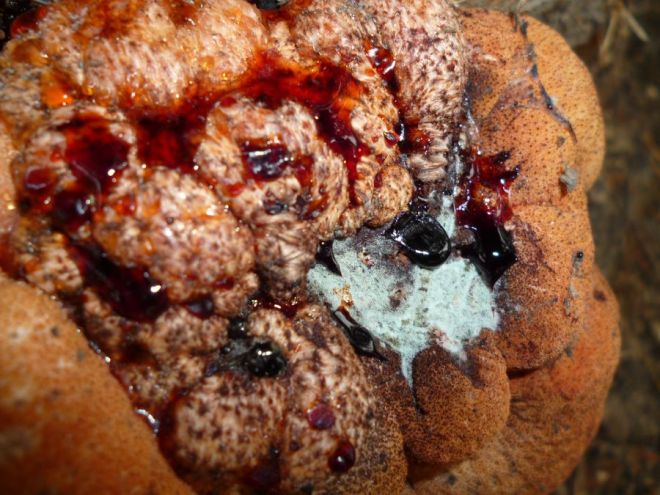
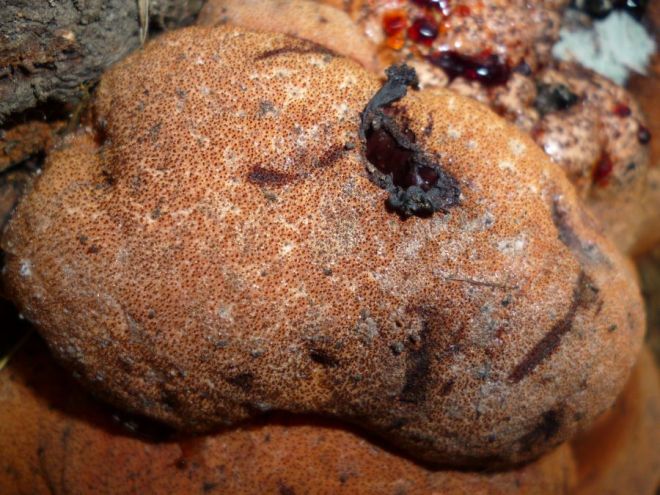


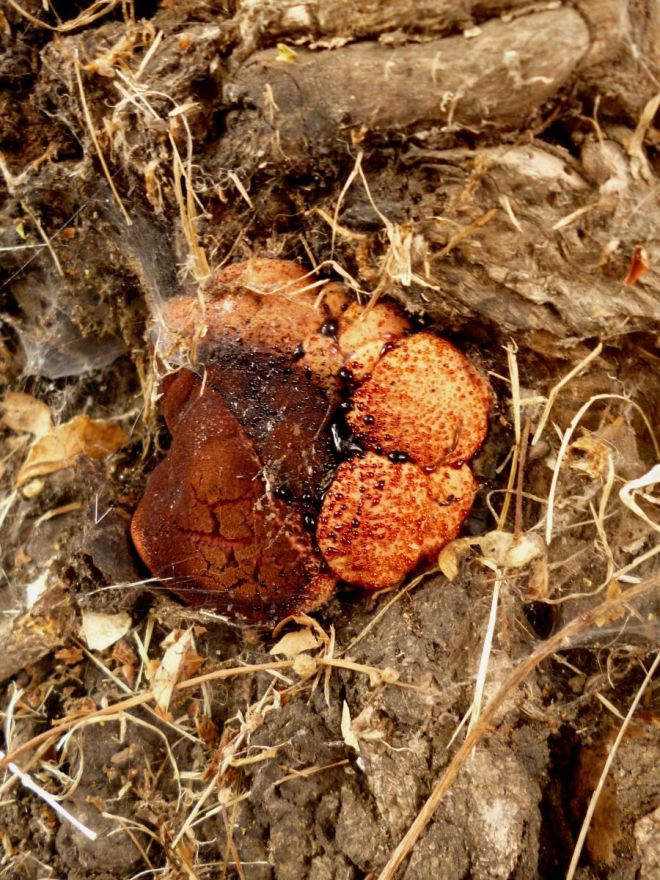
The next series of shots were taken on my mobile phone back in 2015 and again from oak. Once more, the adornment of the fruiting body with exudations, of which some are darker, can be observed. 2016 saw the fungus return, with a vengeance, and in a different position, again, an anamorphic fruiting body.
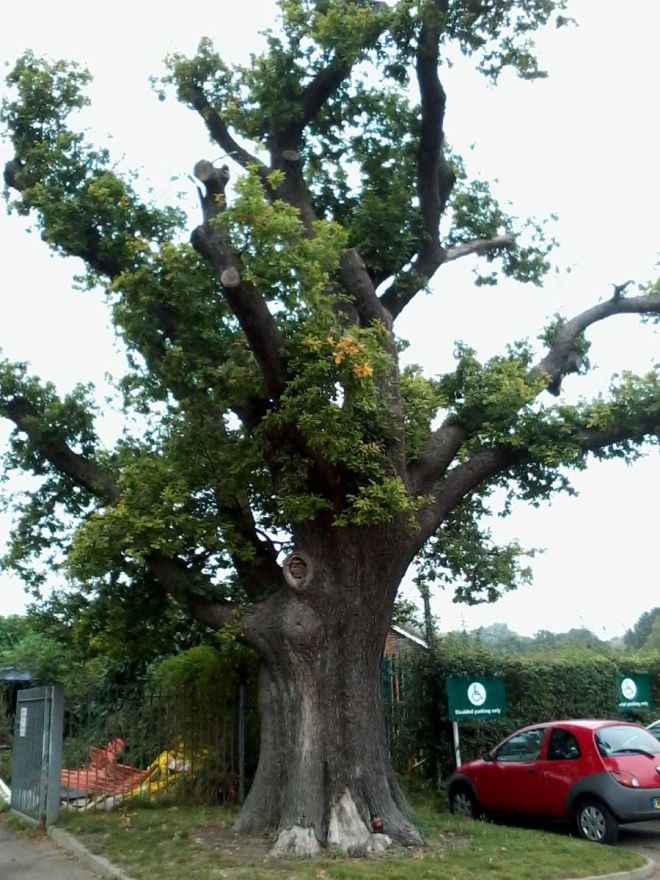

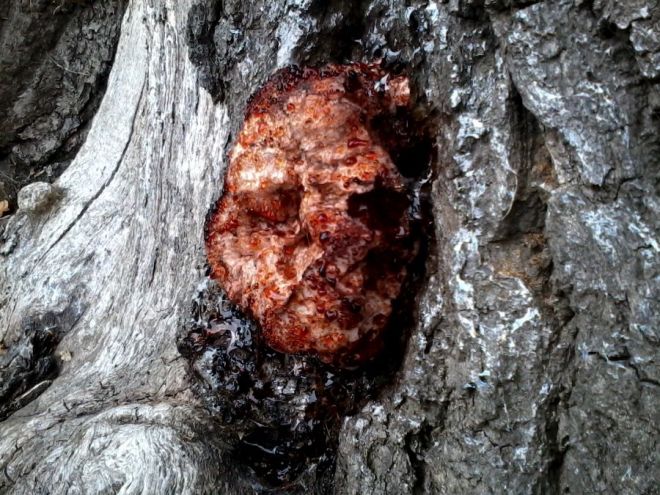
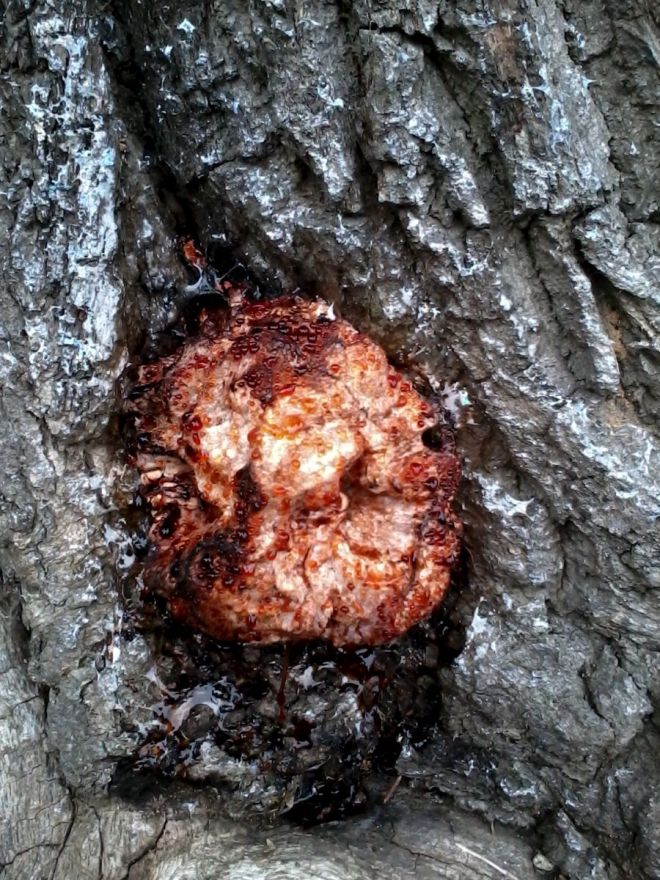
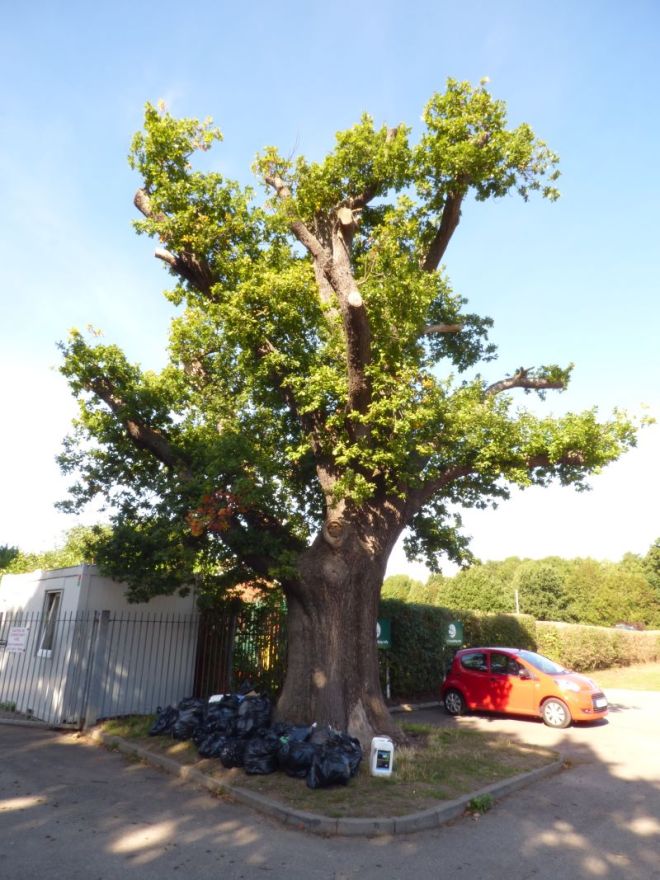
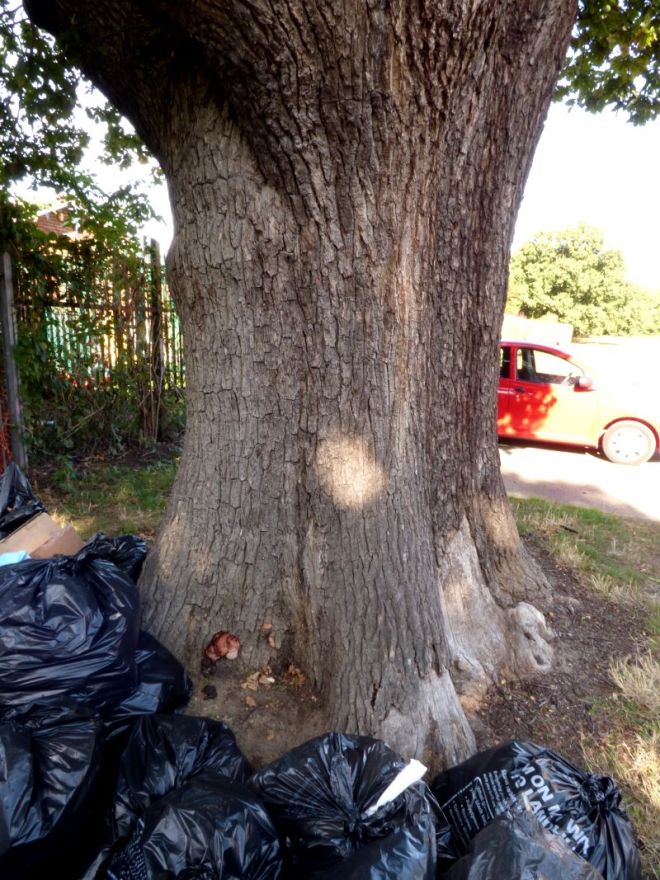



From here, we go to another 2015 find. This time, the fruiting body was a little elevated on the oak and evidently emanating from an area of burring / accumulation of dormant buds beneath the bark surface. This one quickly became senescent after perhaps a week so whether it’s Confistulina or not is tough to say – I include photos of both times I visited it. It did not reappear in 2016.

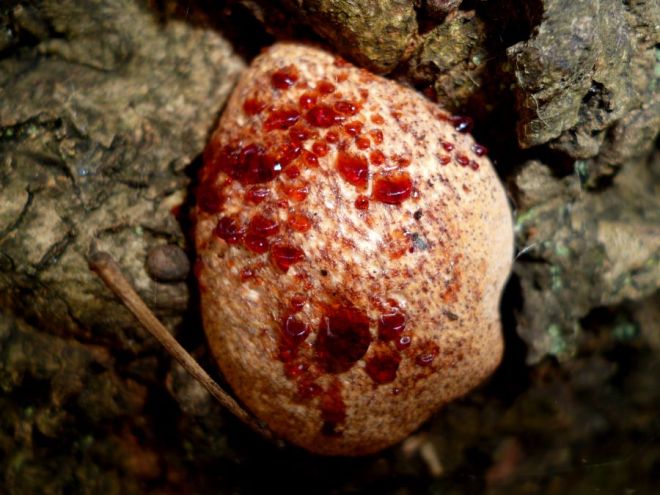

The remainder of the photos take us into 2016 and most (but not all!) are taken with a better camera, which is good! First, we venture down to the New Forest and look at a well-decayed oak log, upon which a cluster of fruiting bodies sit atop the log.

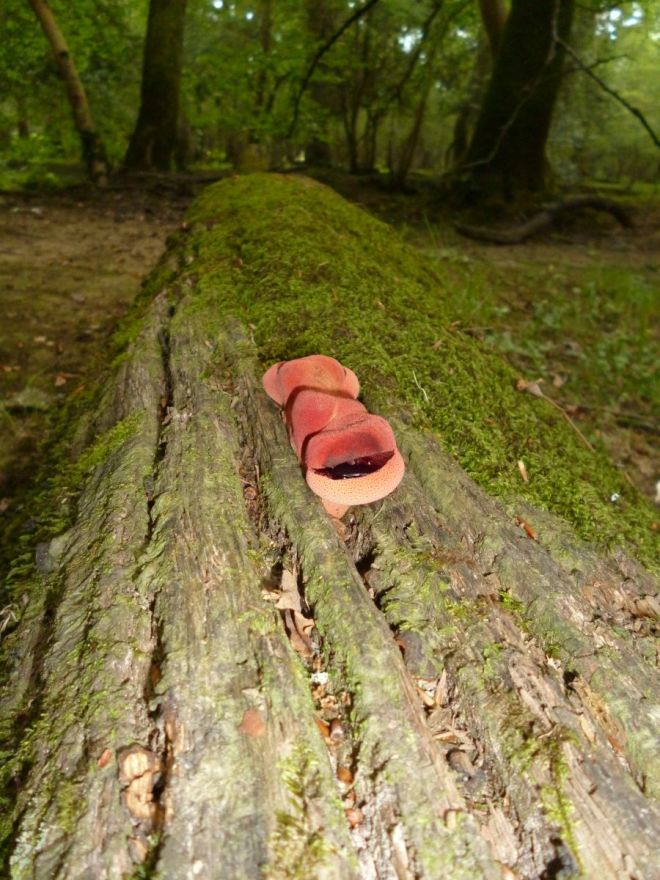


The next series are taken a month apart (late August and late September). What’s curious with this one is that we can see two anamorphic fruiting bodies and, come September, Laetiporus sulphureus fruiting directly alongside. The host, as can be seen, is oak, which is in a hedgerow of oak and ash.

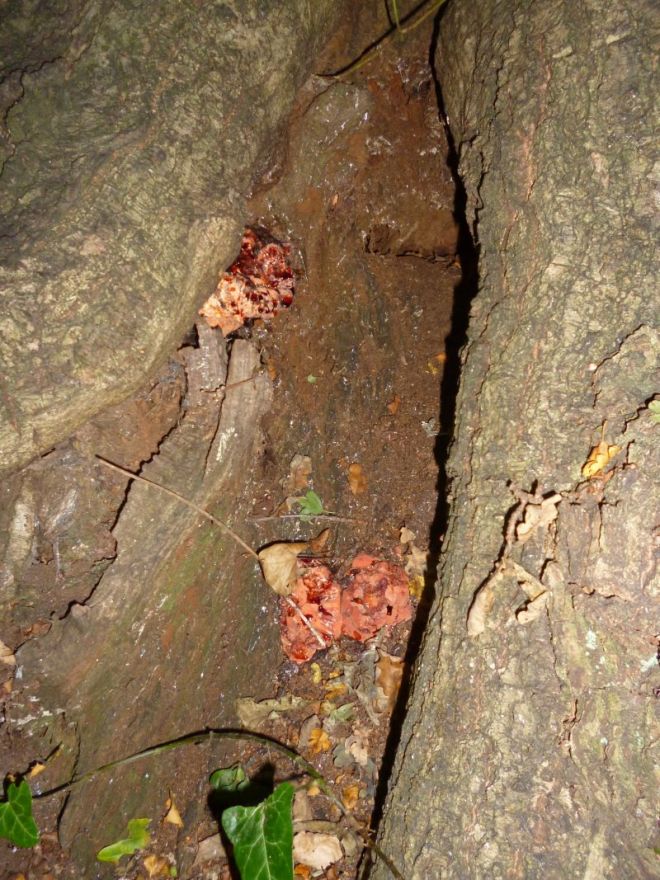
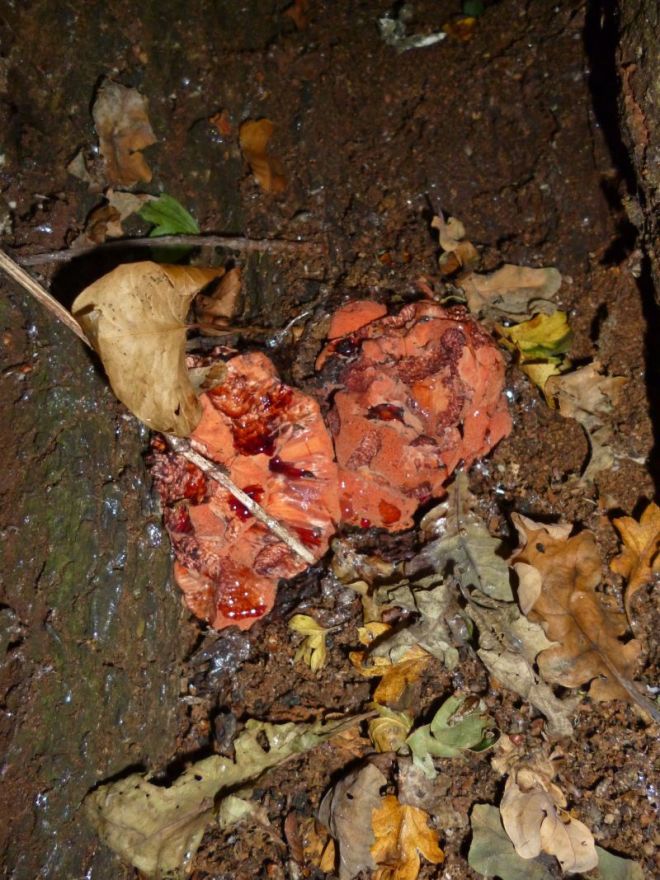
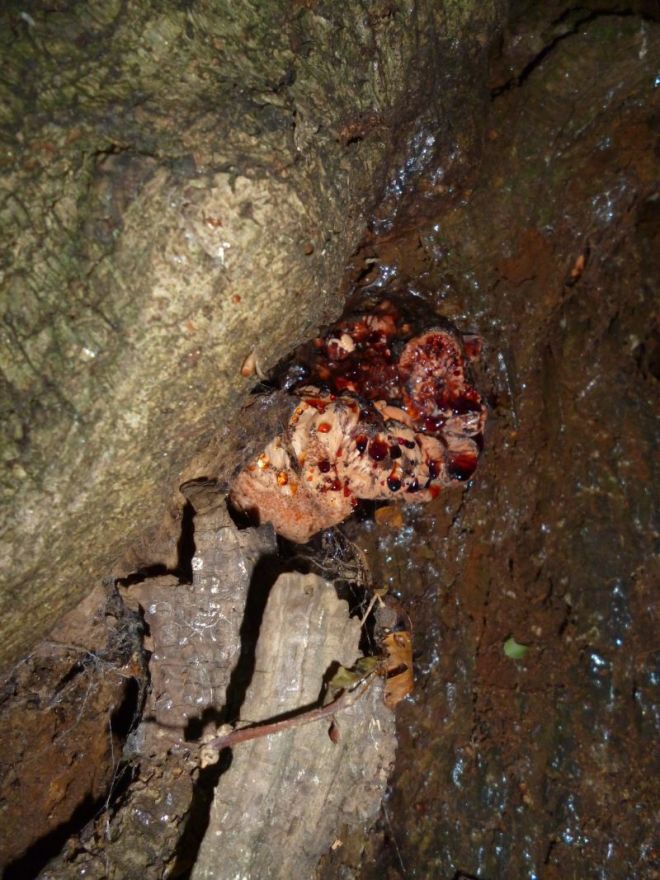



Now, we move to a curious case of two fruiting bodies next to one another, again on oak, where one became a teleomorph and the other an anamorph. Why? Who knows. Very interesting, however, as I am sure you can appreciate.

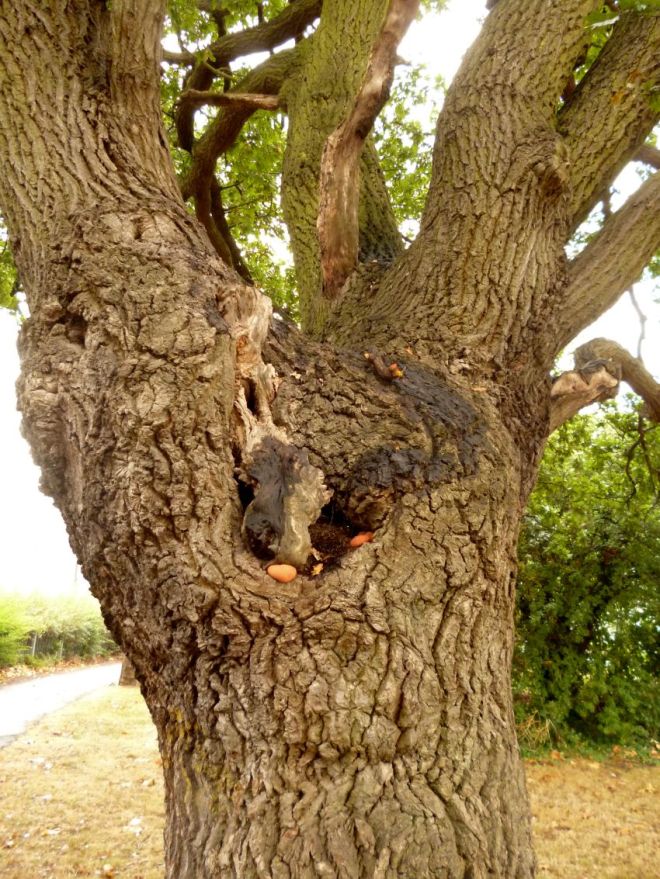
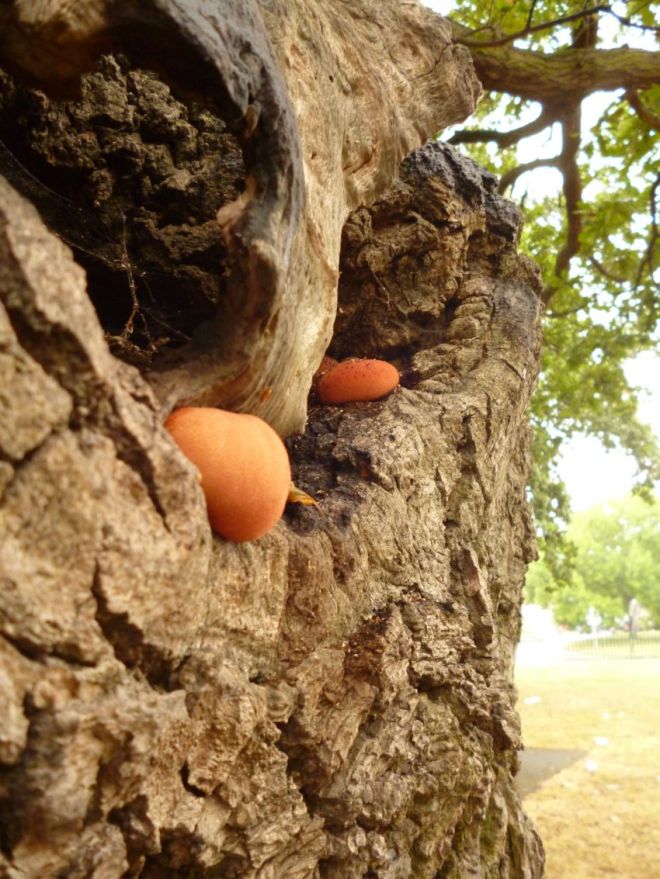

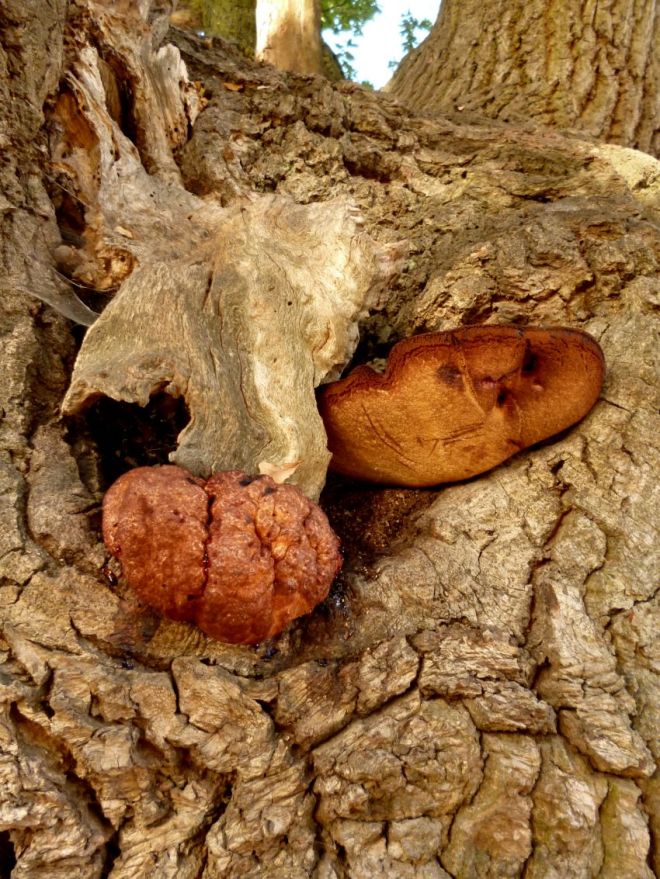
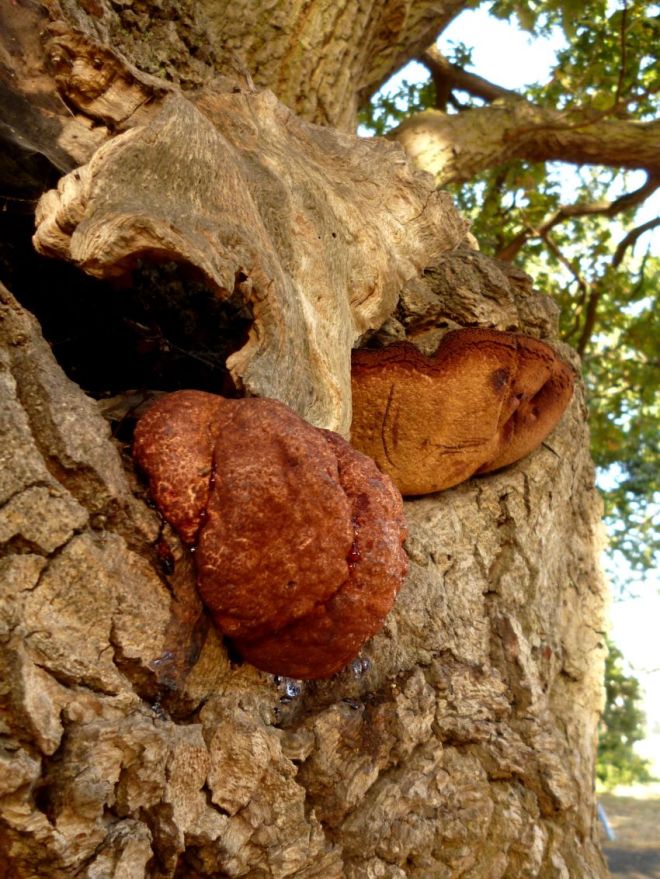
In October of 2016, I came across this majestic oak in a field. On a buttress root was what appeared to be an anamorphic fruiting body of Fistulina hepatica, which we can observe below.
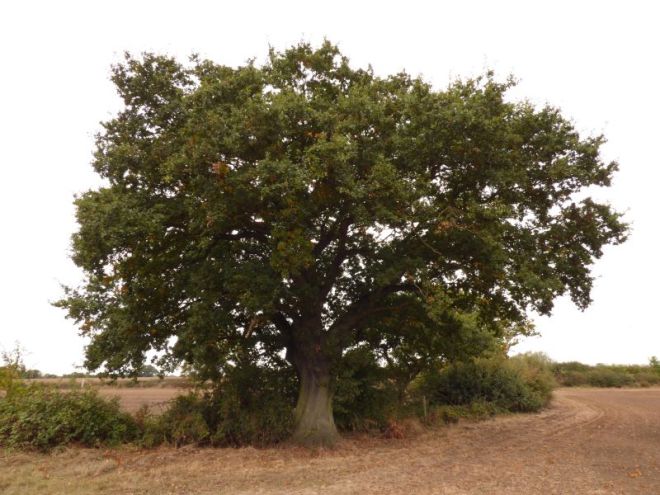
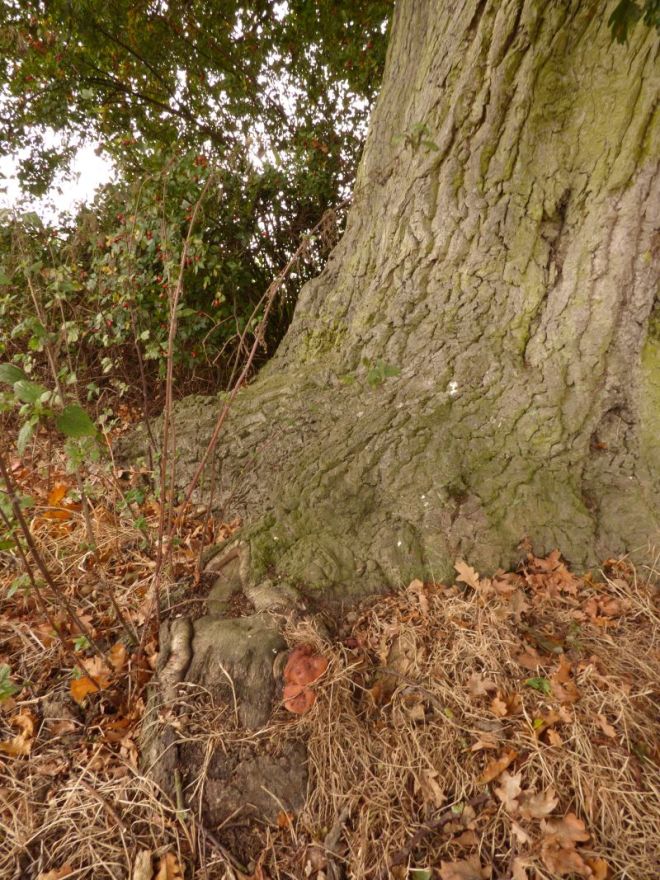

Lastly, here’s one I suspect on sweet chestnut. I didn’t return to check how it did, though this year I’ll certainly keep more of an eye out and be more thorough in my inspections of the samples! Please share any examples you might have found of this, too – it’s important we build up a knowledge base.
